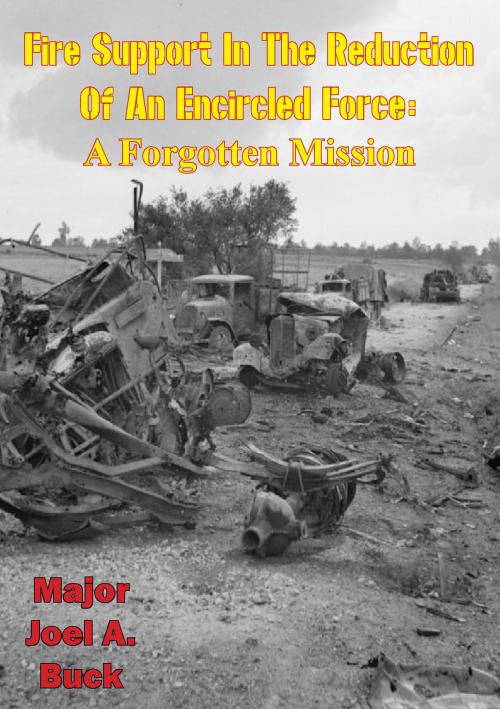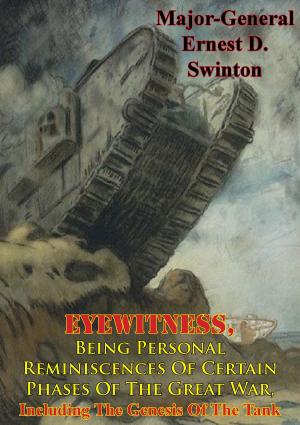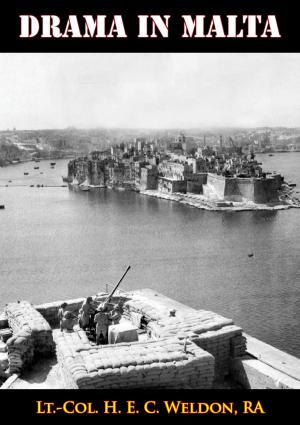Fire Support in the Reduction of an Encircled Force - a Forgotten Mission
Nonfiction, History, Germany, European General, Military, United States| Author: | Major Joel A. Buck | ISBN: | 9781786250285 |
| Publisher: | Lucknow Books | Publication: | November 6, 2015 |
| Imprint: | Lucknow Books | Language: | English |
| Author: | Major Joel A. Buck |
| ISBN: | 9781786250285 |
| Publisher: | Lucknow Books |
| Publication: | November 6, 2015 |
| Imprint: | Lucknow Books |
| Language: | English |
Using historical analysis and survey, this study examines the sufficiency of U.S. field artillery doctrine, tactics, and techniques to support the destruction of an encircled enemy. Focus is on identifying existing weaknesses by comparing applicable lessons learned from history with the practices spelled out in current manuals. The Allied attempt to encircle and reduce the German forces within the Falaise-Argentan pocket in central France during August 1944 and the Soviet Belorussian Offensive and subsequent encirclement and reduction of German forces during June 1944 are examined. The results of a survey completed by the V and VII U.S. Corps artillery commanders on the subject are also included.
Among the shortfalls identified are: current attention is more focused on breaking out of an encirclement than on forming an encirclement; when encircling an enemy is addressed, discussion stops after the encirclement is formed and before reduction begins; field artillery procedures do not separately address this mission; friendly or enemy use of chemical or nuclear weapons has not been considered; the requirement to simultaneously support reduction and exploitation operations has not been addressed; there is a need for an artillery commander at echelons above corps.
The study concludes that the process of reducing a large encircled enemy force is sufficiently different from other operations that it should be separately addressed. Although the “doing” of the component parts of the artillery aspect of this operation are doctrinally established, tying them together into a synergetic package requires innovative attention. Resulting field artillery doctrine, tactics, and techniques derived are equally applicable in reducing an isolated enemy force that has broken through or been Inserted Into our rear area as they are in the reduction of an offensively encircled enemy.
Using historical analysis and survey, this study examines the sufficiency of U.S. field artillery doctrine, tactics, and techniques to support the destruction of an encircled enemy. Focus is on identifying existing weaknesses by comparing applicable lessons learned from history with the practices spelled out in current manuals. The Allied attempt to encircle and reduce the German forces within the Falaise-Argentan pocket in central France during August 1944 and the Soviet Belorussian Offensive and subsequent encirclement and reduction of German forces during June 1944 are examined. The results of a survey completed by the V and VII U.S. Corps artillery commanders on the subject are also included.
Among the shortfalls identified are: current attention is more focused on breaking out of an encirclement than on forming an encirclement; when encircling an enemy is addressed, discussion stops after the encirclement is formed and before reduction begins; field artillery procedures do not separately address this mission; friendly or enemy use of chemical or nuclear weapons has not been considered; the requirement to simultaneously support reduction and exploitation operations has not been addressed; there is a need for an artillery commander at echelons above corps.
The study concludes that the process of reducing a large encircled enemy force is sufficiently different from other operations that it should be separately addressed. Although the “doing” of the component parts of the artillery aspect of this operation are doctrinally established, tying them together into a synergetic package requires innovative attention. Resulting field artillery doctrine, tactics, and techniques derived are equally applicable in reducing an isolated enemy force that has broken through or been Inserted Into our rear area as they are in the reduction of an offensively encircled enemy.


![Cover of the book Machine Gunner’s Notes, France 1918 [Illustrated Edition] by Major Joel A. Buck](https://www.kuoky.com/images/2014/august/300x300/9781782895671-tXJO_300x.jpg)
![Cover of the book NILE TO ALEPPO: With The Light-Horse In The Middle East [Illustrated Edition] by Major Joel A. Buck](https://www.kuoky.com/images/2014/august/300x300/9781782895657-U3q9_300x.jpg)
![Cover of the book The 101st Airborne Division’s Defense Of Bastogne [Illustrated Edition] by Major Joel A. Buck](https://www.kuoky.com/images/2014/august/300x300/9781782893790-VOw1_300x.jpg)

![Cover of the book A War Nurse’s Diary; Sketches From A Belgian Field Hospital [Illustrated Edition] by Major Joel A. Buck](https://www.kuoky.com/images/2014/june/300x300/9781782891635-QpIG_300x.jpg)








